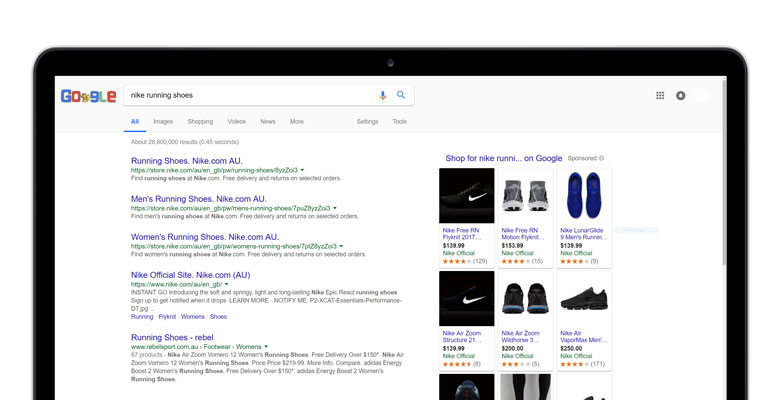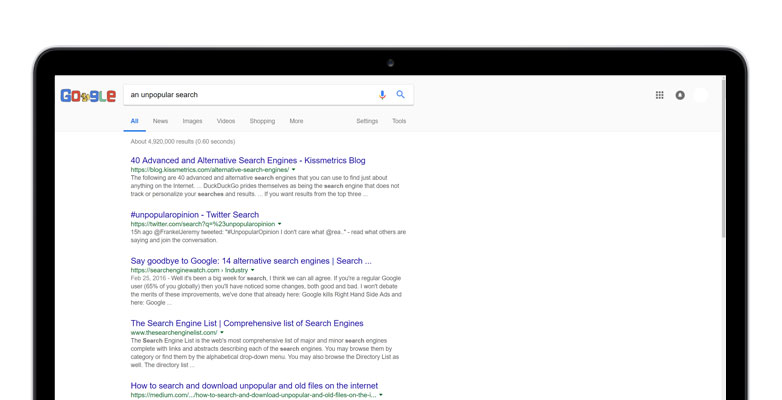What is SEM?
Search Engine Marketing (SEM) involves digital marketing (primarily through paid means) to give your website prominence (or higher visibility) in search engine results or other websites.
In other words, when someone searches for something in Google Search or a price comparison website (such as NexTag, Shopping,com, Shopzill etc…), you want him or her to see the services or products you offer (in the form of an advert), in the hope they visit your website and buy (or get information) from you.
Consider this scenario: When you first launch (or go live) with your new website, even though you may have spent a lot of time factoring in Search Engine Optimisation (SEO – see my blog post here), you may find initially you’re getting little to no traffic. Putting aside some clever marketing for a moment, the main cause for the insignificant visitor numbers is because it takes time for search bots to discover and crawl your website; to make sense of where and how your site should rank in their organic search results. So from the outset, your website won’t be appearing on the first page of Google (or Bing) organic search results. You’ll often hear SEO takes days or even weeks before you see results. I have to agree… But then how in devil’s name do you get traffic to your website if your SEO hasn’t kicked in, or you don’t have the time to spend on SEO to draw targeted traffic to your website? Enter Search Engine Marketing (SEM)…
SEO and SEM are similar in that you search using a Search Engine (like Google or Bing). Relevant and localised results are served up in search results, however the results of your search are wherein SEO and SEM differ.
Search results are displayed as either adverts or regular search results. The ads are displayed based on paid for SEM campaigns, whereas all the other regular (or organic search results) are served based on SEO.
Popular SEM platforms, where you can setup and track your SEM campaigns, are Google Adwords and Microsoft’s Bing Ads. Google is by far the leader in the game. If you have read my blog post about SEO, you will remember that it is in a search engine’s best interests to ensure their search results are relevant and get you exactly what you’re looking for… and snap-snap! This is very true for SEM campaigns, as Google (and the likes) want users to click on the ads served up in search results, which is how they make their money. The more relevant those ads are to the user; the more likely they will react to them; the more likely a goal will be achieved from that ad; the more likely the advertiser is to continue using the search engine’s advertising service… And so on…
The beauty with online advertising (over regular print media and TV advertising) is you can thoroughly track your digital marketing campaigns; from what a potential customer searched, which ad was displayed and if they clicked through, right down to which page they landed on your website, and whether or not they actually purchased from you. And if they did, how much revenue did it equate to? Of course you will need to setup the tracking, but it’s relatively painless and I’m sure you’ll agree it sounds like pretty nifty stuff. The tracking enables you to see if your advertising is actually bringing you a Return on Investment (ROI), which tells you if your ad (or campaign) is truly working for you or not.
A popular SEM campaign type is PPC (pay per click) also sometimes referred to as CPC (cost per click). The payment model to run your campaign is simple; you identify suitable keywords and phrases you want your ad to appear alongside. When someone searches those keywords and key phrases, your ad may appear in their search results. You pay every time someone clicks one of your ads (in their search results). Depending on competition for the key phrase (IE how many other businesses are targeting the same keywords for their ads to appear) determines how much you’ll be paying for that click (you can set bid limits and campaign budgets – so you don’t overspend). But if you go in too low, your ads may never appear.
There are other payment models for SEM campaigns, depending on the service you are using, you may come across other popular payment methods such as CPA and CPM.
CPA (Cost per Action): You only pay when your ad is displayed plus the user clicks it and actually purchases (or performs some other action, like calls or emails you). No sale (or action rather), no fee.
CPM (Cost per Thousand): The “M” stands for the Roman numeral, one thousand. So, you pay x dollars, per set of ad displays or clicks.
I hope my post has given you a better idea of what Search Engine Marketing (SEM) is. If you need a hand setting up your SEM, don’t hesitate to reach out.
Ciao now!









